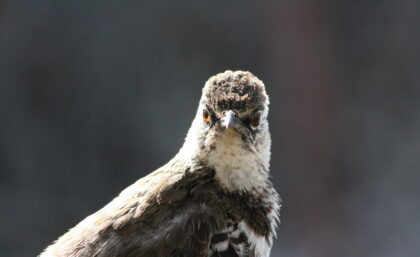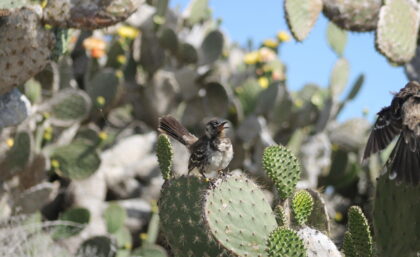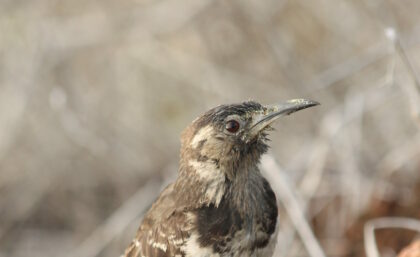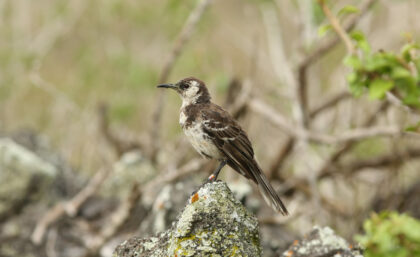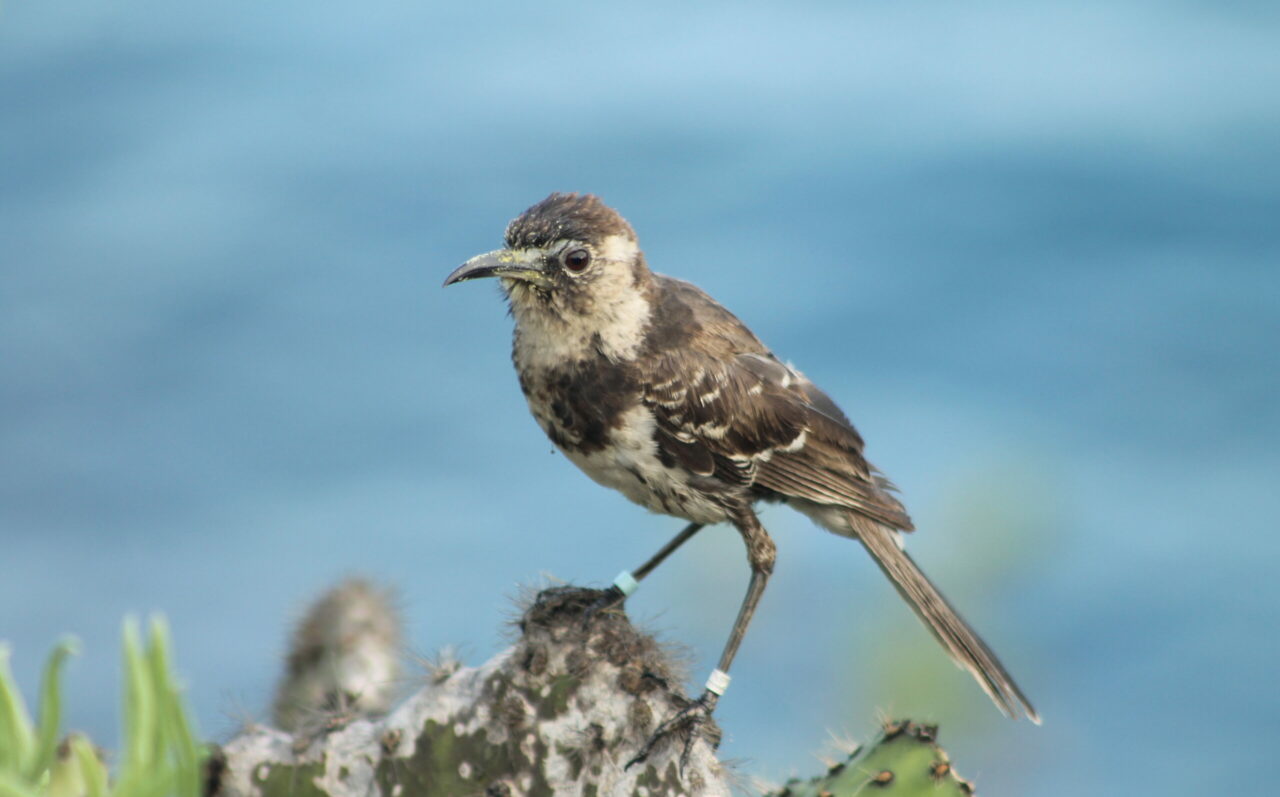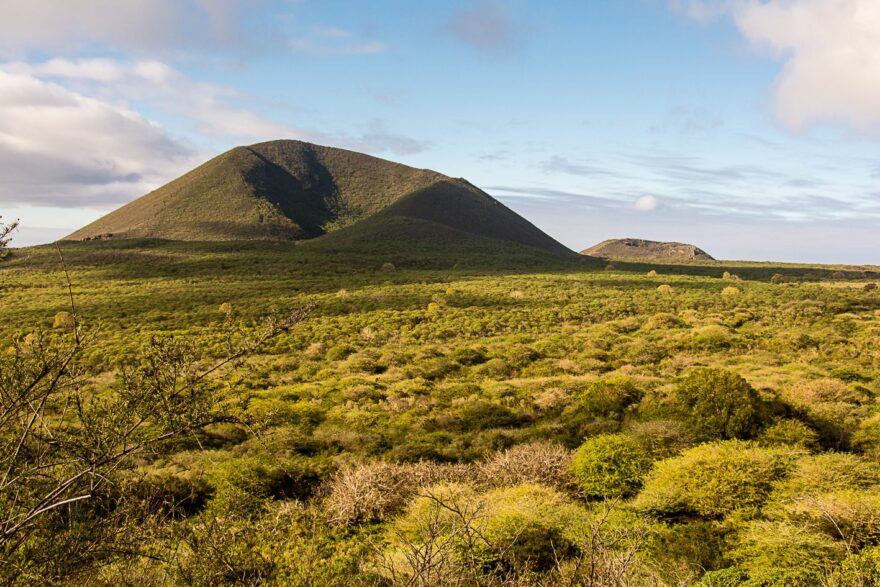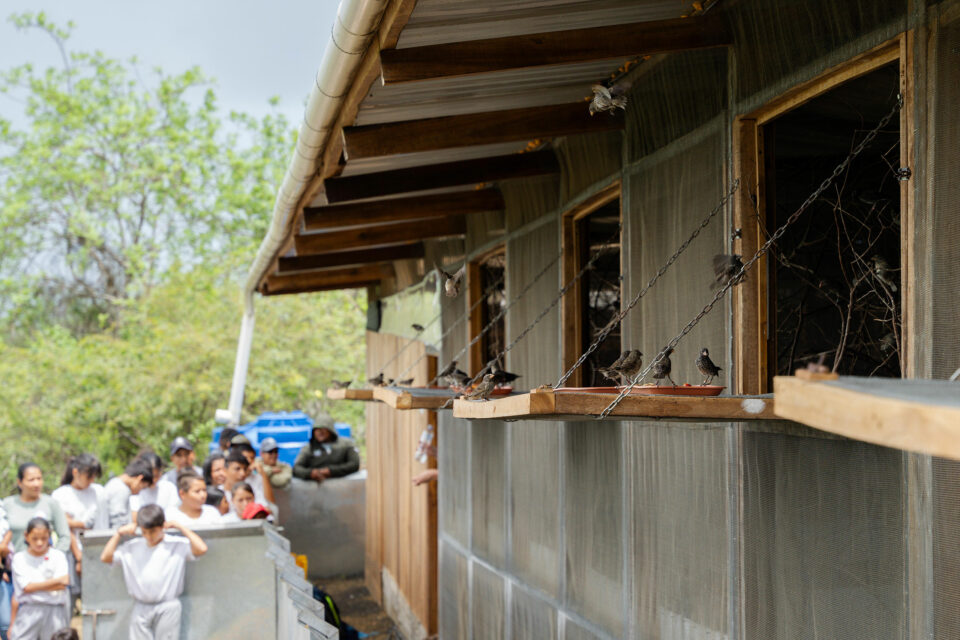
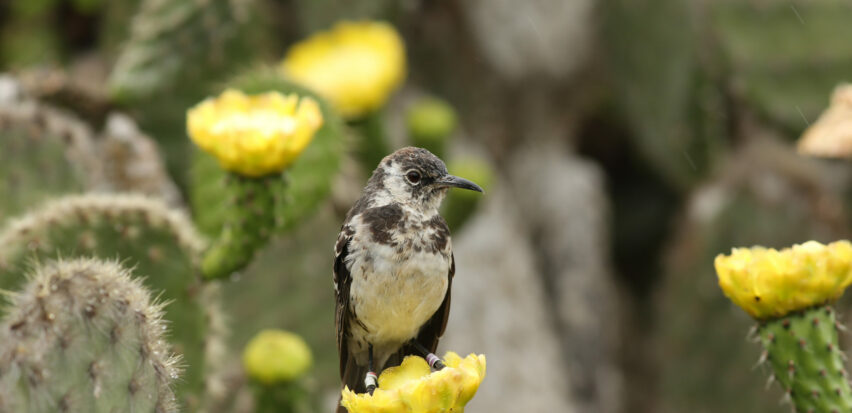
Overview
The Floreana mockingbird (Mimus trifasciatus) is the smallest of the four Galapagos mockingbird species. Extinct from its original home of Floreana due to habitat loss and predation from invasive species, it now only exists on two tiny islets nearby, Champion and Gardner. The project ultimately aims to reintroduce individuals from both islets back to Floreana, once the island has been restored to its former glory.
Project Partners



The Floreana mockingbird in numbers

50
years after Darwin's visit, the species was extinct on Floreana
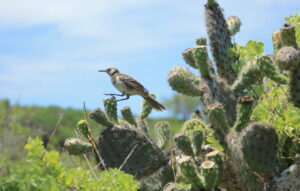
< 1 k
Fewer than 1,000 individuals remain, making them an Endangered species
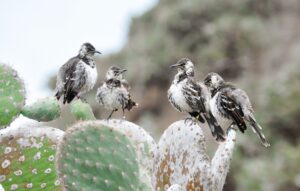
50 %
chance of the species persisting on Champion for another 100 years
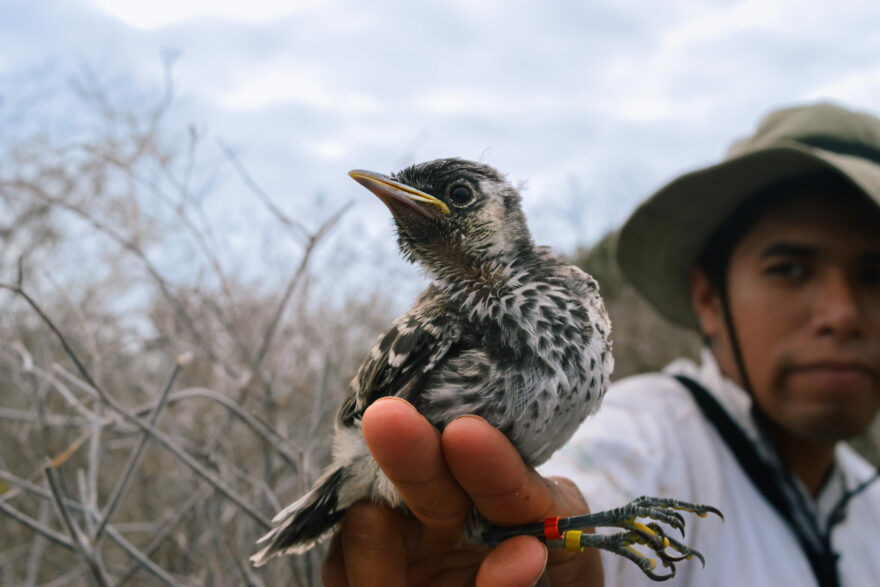
The problem
During Charles Darwin’s visit to the Galapagos Islands in 1835, he noticed that each island seemed to have a different mockingbird species. He collected and described specimens, of which the Floreana mockingbird was the first, helping him to develop his theory of evolution.
Sadly, the Floreana mockingbird is no longer found on the island from which it takes its name. The species became extinct on Floreana in the 19th century due to habitat loss and predation by invasive species. The global population of the Floreana mockingbird is now only found on two small islets off the coast of Floreana. Numbers fluctuate dramatically between 250-500 individuals due to extreme weather events, and the species is currently listed by the IUCN as Endangered.
Unfortunately, these two small islets, Gardner and Champion, are extremely isolated from one another. Previous research has suggested that the population on Champion is highly inbred and harbours valuable genetic diversity not found on Gardner (20km away), as these two populations have not been in contact for over 100 years.
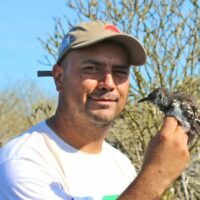
If we tackle the issues that currently prevent them from establishing naturally on Floreana, we could expect a third population of mockingbirds within five years.
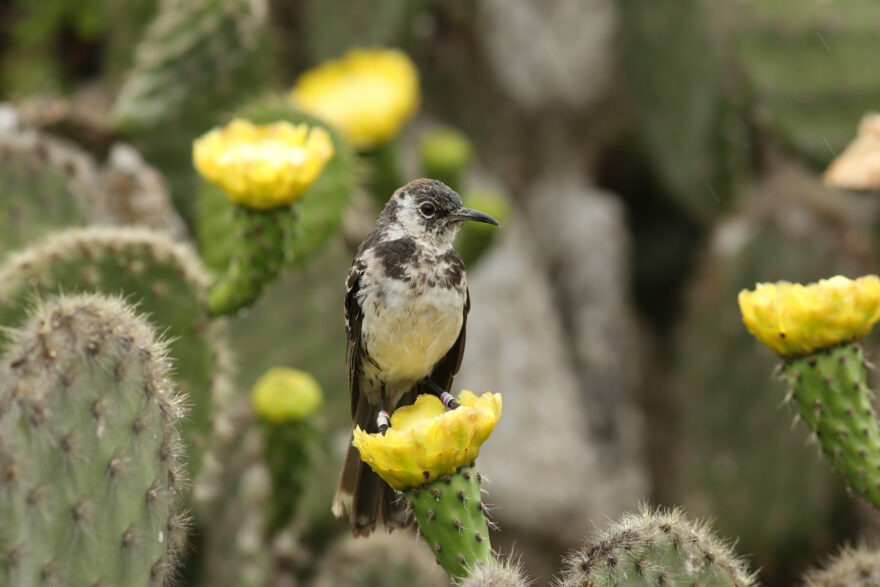
How we’re tackling it
The Floreana Mockingbird Project aims to prevent further loss of genetic diversity as well as to reduce mortality, including understanding why nests fail and how to reduce juvenile mortality rates caused by introduced species. The project undertakes annual counts on the known populations and works to quantify year-round habitat requirements with the ultimate aim of reintroducing them to Floreana.
Overall, the project team, led by Luis Ortiz-Catedral, has detected that the population, although declining, is more stable than first thought. They have determined that the yearly fluctuations in numbers are closely linked to the amount of rainfall at the start of the breeding season. The two islets where the species is now found do not have rats and cats on them, and the invasive smooth-billed ani seems to have a negligible effect on the species’ numbers. Early investigations have also shown that the availability of Opuntia megasperma flowers during January and February is linked to chick survival and insect availability.
Other achievements include:
- Training rangers from the Galapagos National Park in field techniques to monitor Floreana mockingbirds
- Characterisation of habitat requirements of Floreana mockingbirds on Champion and Gardner
- Mapping of key sites for re-vegetation in the lowlands of Floreana
- Undertaking behaviour surveys to ensure that family groups are not split during reintroduction
Photo gallery
Click on an image to view larger
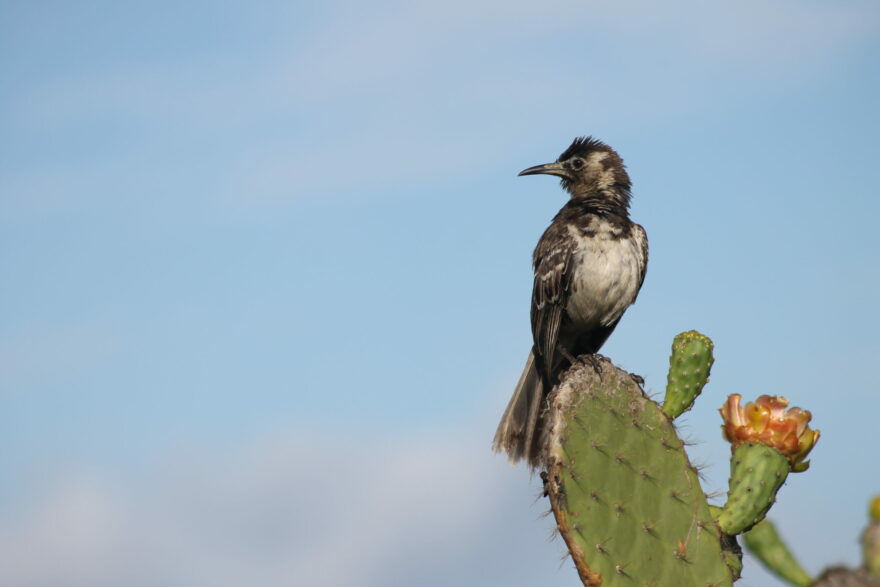
Project goals
The project aims to halt the population decline of the Floreana mockingbird, increase genetic diversity and connectivity of the current populations, and reintroduce the species to Floreana to promote the increase of the global population. This will be achieved by:
- Delivering the project according to the Floreana Mockingbird Reintroduction Action Plan
- Closely monitoring nests to prevent predation by introduced species
- Continuing to carry out crucial research into the Floreana mockingbirds’ habitat preferences and behavioural characteristics
- As part of a larger project, removing invasive species on Floreana
- Studying vegetation use and effect of weather conditions on mockingbird ecology
- Identifying key lowland areas on Floreana for reforestation of native vegetation important for mockingbirds to create an ecological corridor
Project updates

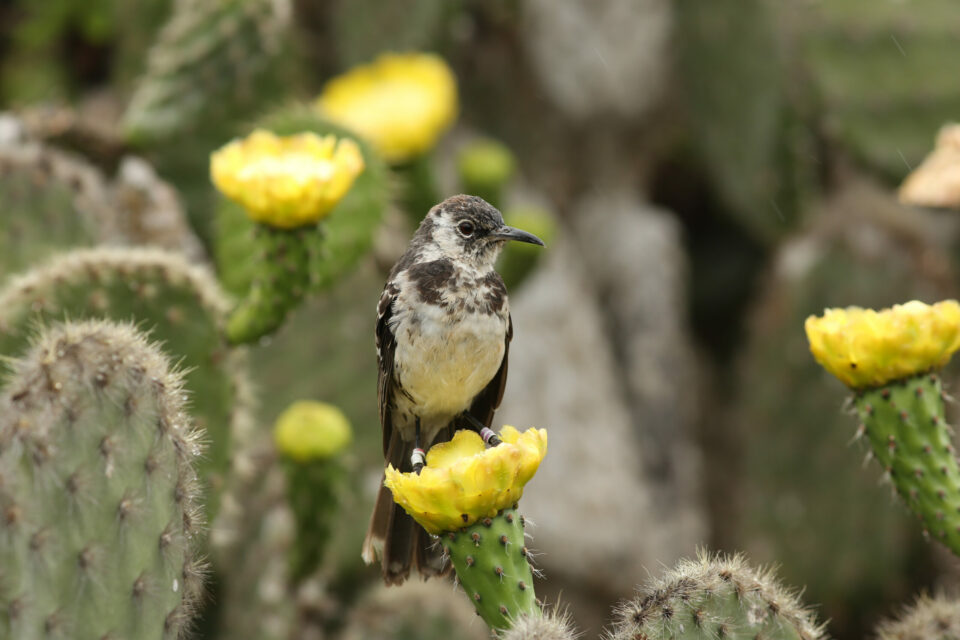
12 missing species set to return to Floreana
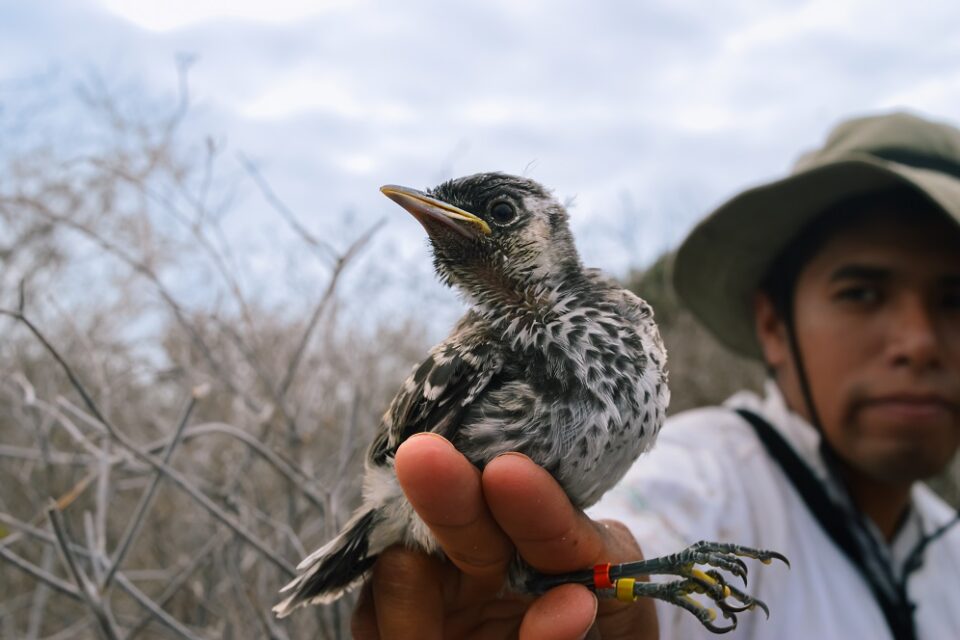
How to save a mockingbird

Project update: Floreana mockingbird
Help save this species before it is lost forever
Please help us bring the Floreana mockingbird home by donating today or by adopting a Floreana mockingbird.

